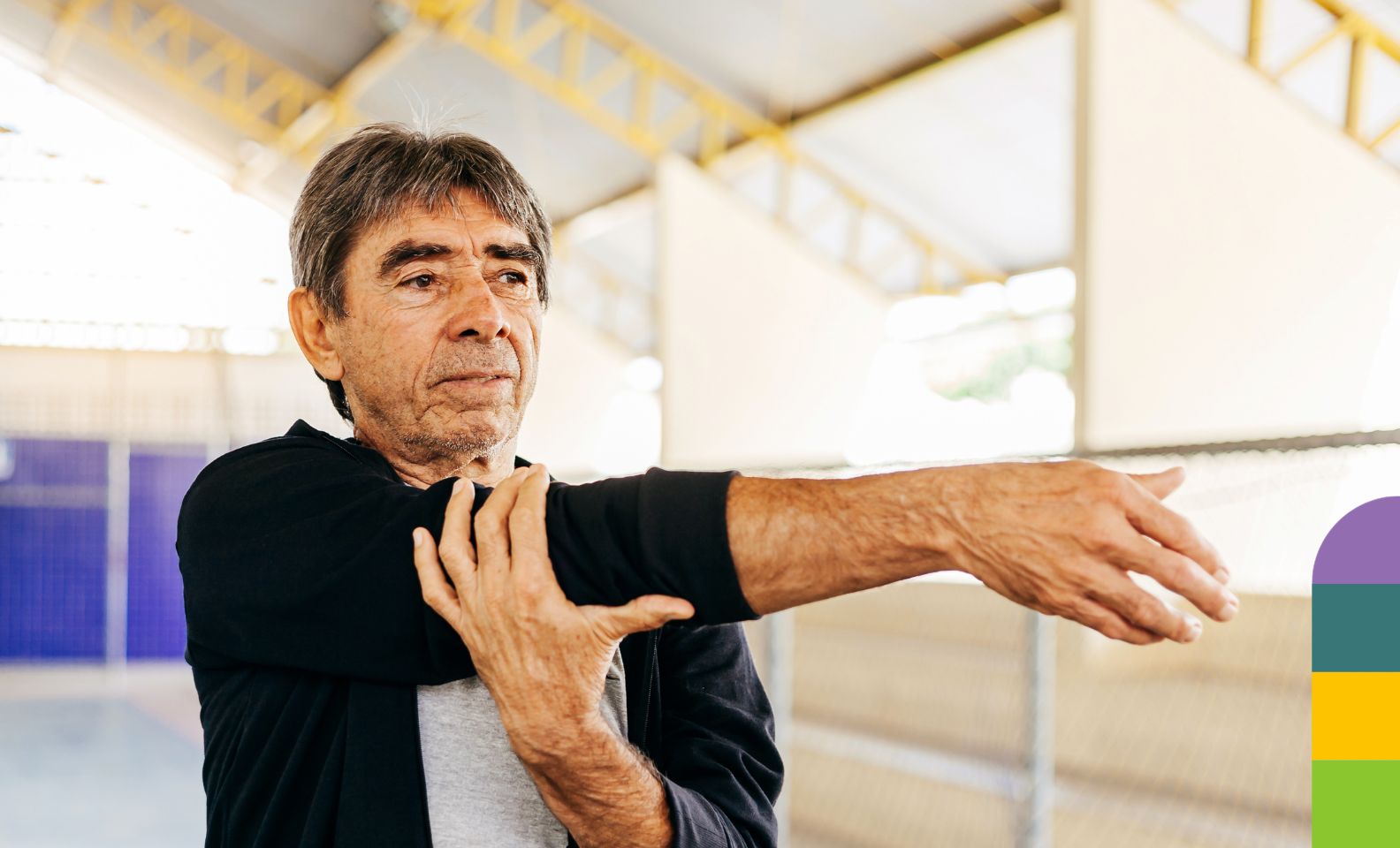Arthritis and Physical Activity
At Maple, we seek to inspire a positive change in the lives of those living with arthritis and we believe physical activity and meaningful social interactions play pivotal roles in enhancing our overall quality of life. With the help of a compassionate support worker, cultivating a well-rounded, physical and mentally enriching routine can be life changing.
Physical activity is important for people living with arthritis as it can minimise joint pain and discomfort while increasing mobility, strength and maintaining independence. Low impact and gentle activities such as walking, cycling, water aerobics, swimming and yoga are great ways to introduce physical activity into your daily routine.
There’s so much more to learn about the profound advantages and positive impacts that embracing physical exercises, workout classes, and strength-building routines can offer to those living with arthritis, as well as those who look after people with disabilities.
Is physical activity good for arthritis?
Physical activity can be extremely beneficial for people living with arthritis. Arthritis occurs when you have inflammation and stiffness in your joints and the right kind of exercise can loosen those areas, help build strength and ease pain. It can also help to maintain and even improve your joint flexibility and range of motion, which is crucial for arthritis patients to maintain their independence and daily activities.
Regular physical activity can also help you to maintain a healthy weight, as excess weight can put additional stress on your joints. Building muscles around the affected areas can provide support and stability, reducing the strain on those joints. Engaging in physical activity can also improve your mood and reduce the risk of depression and anxiety, which is all too common for people living with chronic conditions such as arthritis.
How to do physical activity with arthritis
Before you consider an exercise program, it’s essential to approach it carefully and consult with a health professional. Your doctor or physical therapist can provide expert guidance and tailor an exercise routine that takes into account your specific condition and limitations.
You might choose to opt for low impact exercises that are easy on the joints, and avoid high impact activities that can worsen joint pain, especially in the beginning. Start with gentle exercises and gradually increase in intensity and duration as your body becomes accustomed to the activity.
Remember to listen to your body, and pay attention to how it responds to the exercise. If you experience any increased pain or discomfort be sure to stop or modify the activity. Remember, you can always use assistive devices such as braces, splints, or walking aids to provide you with more support during your chosen activities.
What physical activity is good for arthritis?
Most physical activity can be good for arthritis as long as it’s done within your own limitations. The specific exercises you choose should depend on the type and severity of your arthritis, as well as your own preferences.
Ultimately, the best physical exercise for arthritis is one that you enjoy and can consistently incorporate into your routine. But generally, low impact activities that are gentle on the joints tend to work best. These include:
- Walking – A low impact activity that is generally safe for most people living with arthritis. It helps improve cardiovascular fitness, joint mobility, and overall well-being. Don’t forget your supportive and comfortable footwear.
- Swimming and water aerobics – Exercising in water reduces the impact on your joints while providing resistance for muscle strengthening. This makes swimming or water aerobics a great choice for people with arthritis.
- Cycling – A low impact exercise to improve joint mobility and cardiovascular fitness. Stationary bikes could also be an option if outdoor cycling is not possible.
- Yoga – Gentle yoga can improve flexibility and strength while also promoting relaxation and reducing stress. Even better if you can find local classes designed specifically for those living with arthritis.
- Tai Chi – A mind-body exercise that incorporates slow, flowing movements and deep breathing. It’s great for improving balance, flexibility and joint function.
- Strength training – Exercises with light weights or resistance bands can help you to build muscle around your affected joints, which in turn provides them with more support. Avoid overloading the joints and remember to focus on your proper form.
- Pilates – An exercise that focuses on core strength, flexibility and posture. Pilates can be adapted to help those living with arthritis with the help of apparatus and controlled movements.
- Range of motion exercises – These are exercises that are designed to improve joint mobility and flexibility. It involves moving a joint through its full range of motion without resistance.
What activities should be avoided with arthritis?
While a healthy routine of physical activities can be beneficial for arthritis, certain activities should be approached with caution or avoided if possible, especially if they exacerbate pain or put excessive stress on the affected joints. The activities to be cautious of may vary depending on the type and severity of your arthritis, but some general guidelines to follow are to:
- Avoid activities that involve high impact movements, body contact and jarring forces on your joints. These could include running or jogging, jumping exercises, high energy aerobics or sports like rugby.
- Avoid activities that require repetitive joint movements, especially if they cause pain or discomfort. Examples include lifting heavy weights and activities that involve repetitive gripping or twisting such as racquet sports.
- Avoid overexertion or pushing yourself too hard during physical activity as this could lead to injury or worsen your arthritis symptoms. Listen to your body and avoid pushing through severe pain.
- Avoid exercising in extreme weather as this can exacerbate your arthritis symptoms. Make sure you stay hydrated in very hot weather and dress warmly in the cold to protect joints from stiffness.
How can my Support Worker help with physical activity?
Arthritis is a uniquely personal condition, it’s important to keep in mind that what may prove effective for some people might not necessarily be the right approach for others. With the assistance of a compassionate and skilled support worker, you can collaboratively craft a customised plan. Together you can discover activities that bring you joy and align with your needs, set goals, closely track your progress, and adjust your routine when necessary.
At Maple, we can help you to seek out programs at local community centres, schools or specialised organisations such as Athletics NSW. The use of adapted equipment such as resistance bands, stability balls or modified sports equipment can help to make activities more accessible.
Ultimately your support worker can help you to cultivate a life that nurtures your overall well-being and improves your quality of life—mind, body and soul.
Reach out to Maple Community Services today to find out more about incorporating physical activity into your routine and connecting with our highly knowledgeable and competent team.




